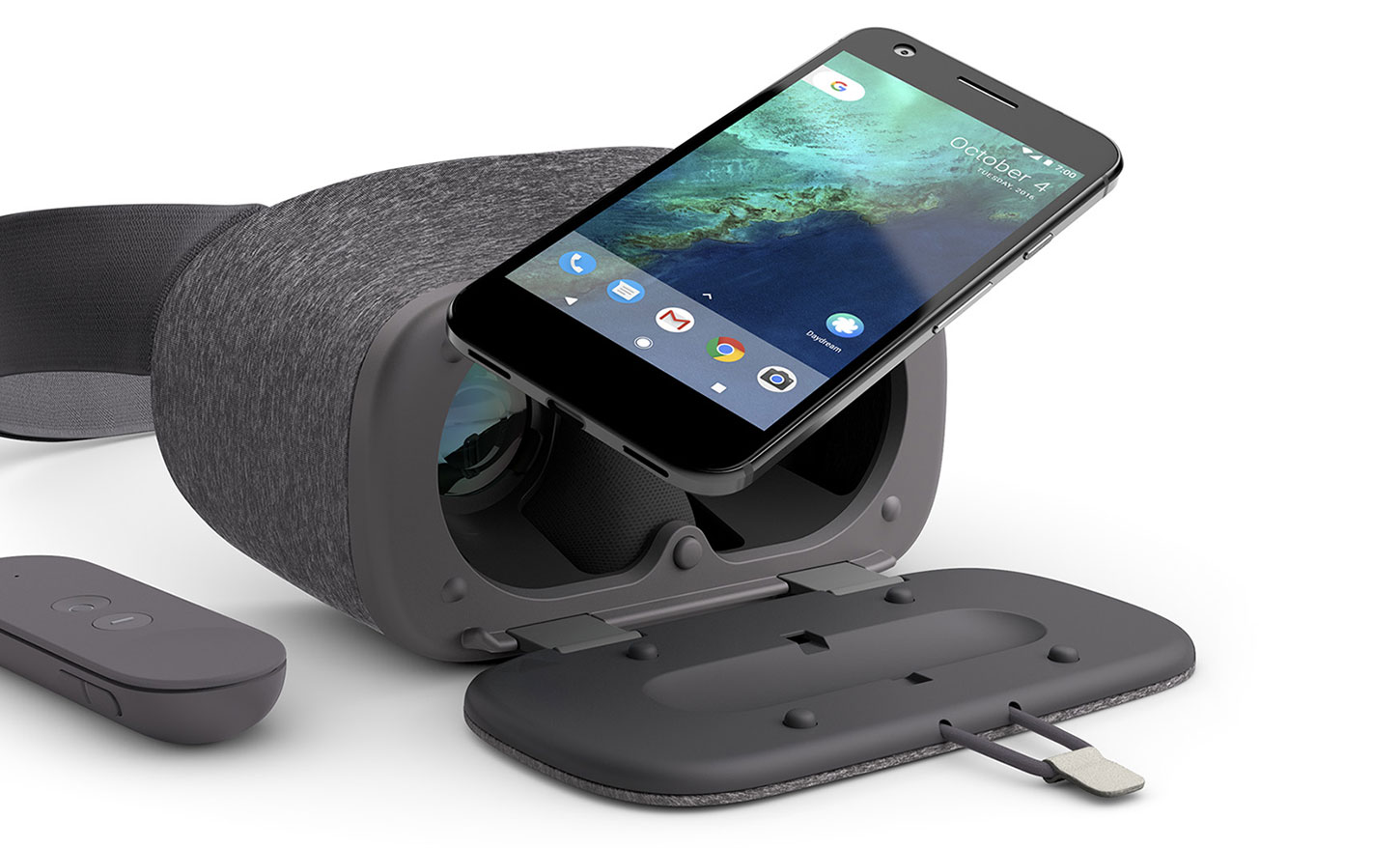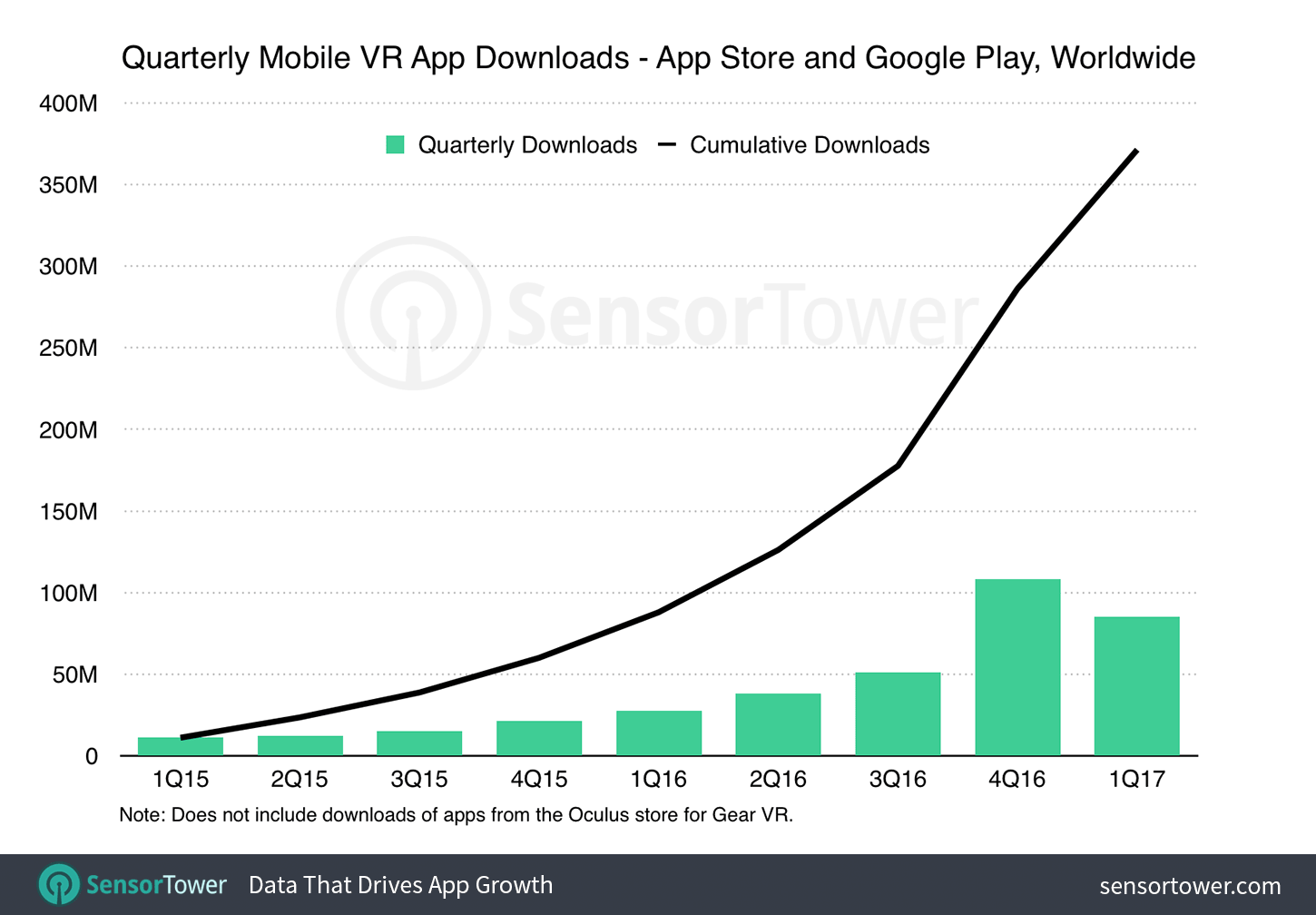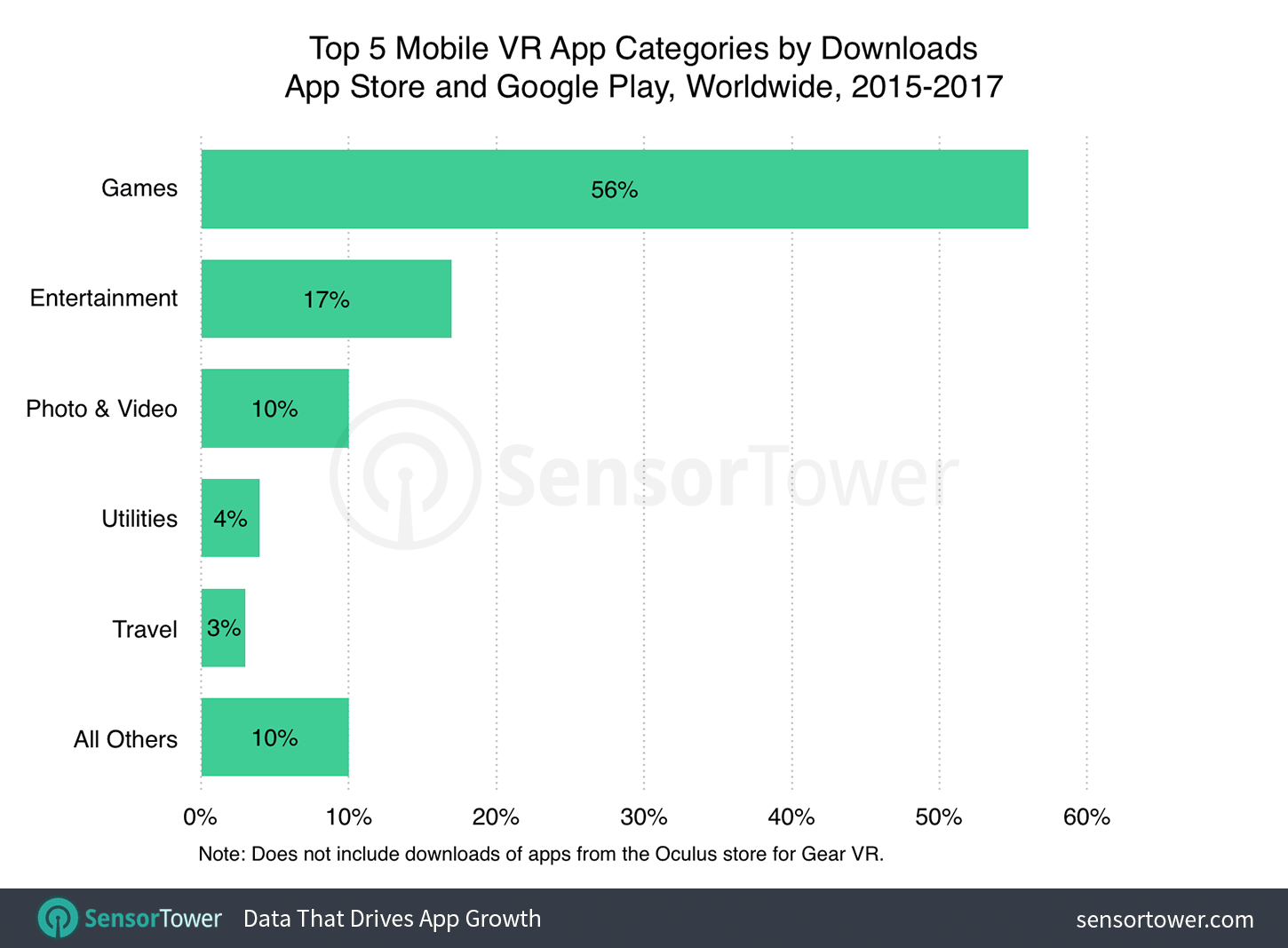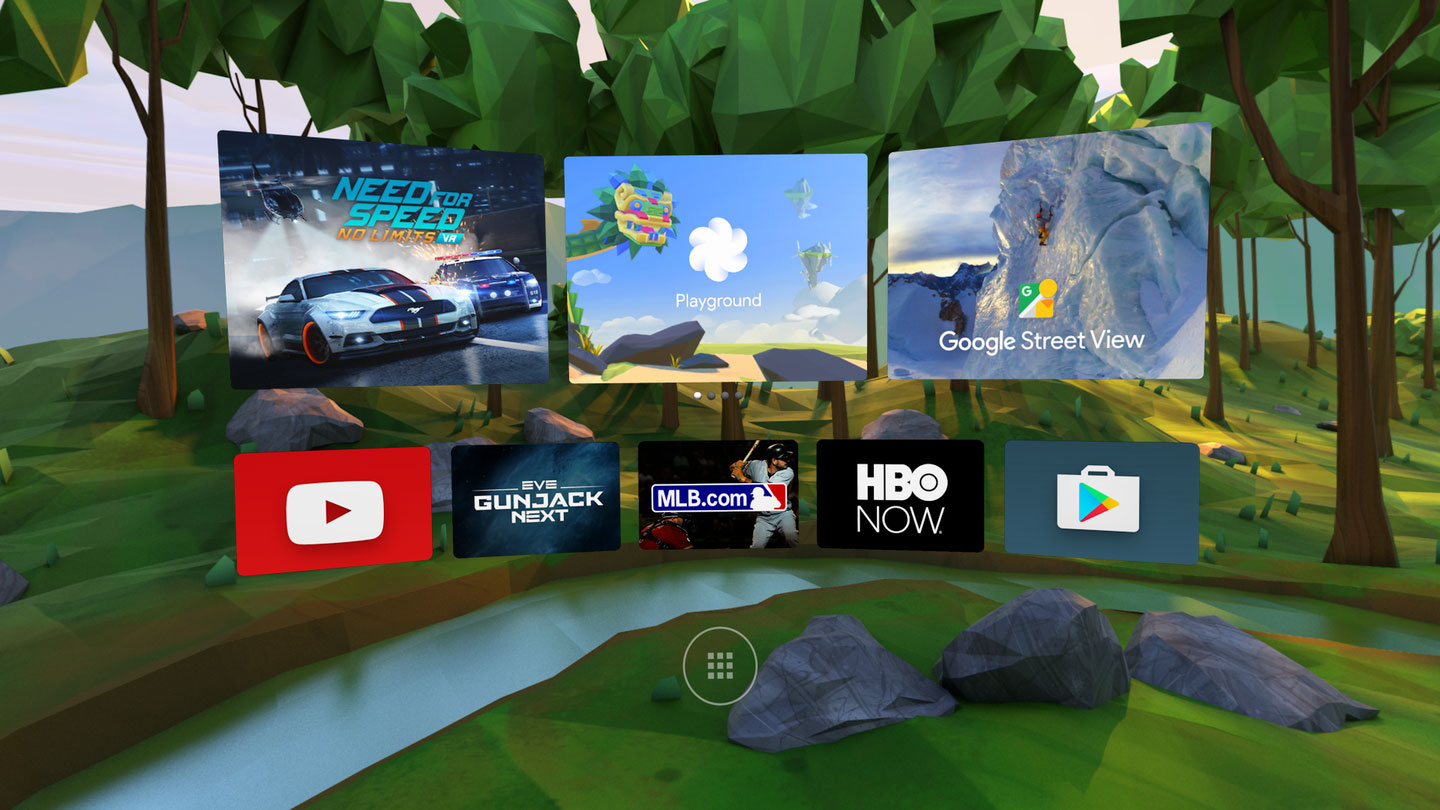Predictions for the Digital Economy in 2026 Report is Live!
Mobile App Insights · Randy Nelson · April 2017
Mobile VR Downloads Grew 276% in 2016, Topping 371 Million since Q1 2015
Sensor Tower analyzes the growth of VR game and application downloads on the App Store and Google Play over the past two years.

Consumer-level virtual reality gained tremendous momentum in 2016 with the release of the Oculus Rift, HTC Vive, and PlayStation VR. But while these PC and console-based VR solutions dominated the spotlight, mobile VR was experiencing its own surge in popularity.
According to our analysis of Sensor Tower Store Intelligence data, global downloads of VR games and apps from the App Store and Google Play totaled approximately 226 million in 2016, which represented a 276 percent year-over-year increase from 2015.
In the first quarter of 2017 alone, mobile VR software downloads across both platforms totaled more than 85 million worldwide, a 205 percent year-over-year increase. In the following report, we'll explore these figures in depth and look at how downloads grew across both Apple and Google's stores.
Cumulative Downloads and Quarterly Growth

Our analysis showed that cumulative worldwide downloads of apps featuring VR functionality on both platforms reached approximately 371 million between January 1, 2015 and March 31, 2017. This figure includes all apps with at least 1,000 downloads in the period we analyzed and some degree of VR functionality requiring a head-mounted display, such as Google Cardboard or Daydream, but does not include downloads from the Oculus store for Samsung's Gear VR.
Breaking this figure down by platform, it encompasses approximately 106 million downloads on the App Store and another 265 million on Google Play (third-party Android store downloads were not counted towards this total).
The cumulative figure represents growth from approximately 11 million VR app downloads in the first quarter of 2015 to about 85 million last quarter. Quarterly growth of these apps accelerated through 2016, culminating with the single largest quarter thus far for mobile VR software in Q4 2016, when combined downloads on both stores topped 108.5 million, an increase of 411 percent year-over-year.

The monthly download chart above provides more detail on Q4 of last year, revealing that the majority of mobile VR downloads occurred in December—not surprising given the variety of Google Cardboard-like VR accessories available for both platforms at retail, not to mention the November launch of Google's own Daydream headset for Android devices (indicated on the chart).
Worldwide downloads of VR apps grew 424 percent year-over-year on Google Play in December to about 38.3 million, while they increased by 727 percent on the App Store, to approximately 21.4 million, versus the same month in 2015. It's worth noting that this growth on Apple's platform came without an available first-party VR device for iPhone and no significant VR-focused marketing from Cupertino.
Category Breakdown: Games Dominate (Unsurprisingly)

The dominant focus on gaming applications that's present with PC and console-based VR is echoed on mobile, with games being the largest draw to the medium for consumers. Games represented the single largest category of VR app downloads during the period we analyzed, accounting for about 56 percent of all installs. On iOS, games accounted for approximately 57 percent of all downloads; on Google Play, their share was about 55 percent.
Diving deeper into our cohort of VR games, they accounted for about 36.9 million downloads on the App Store in 2016, an increase of 229 percent over 2015's approximately 11.2 million. So far in 2017, Q1 downloads of VR games on iOS have totaled about 23.7 million worldwide, a 246 percent year-over-year increase from Q1 2016.
Over on Google Play, VR games generated approximately 85.3 million downloads worldwide in 2016, which was a 271 percent increase year-over-year compared to about 23 million in 2015. In terms of Q1 2017, Google's platform saw roughly 38.8 million VR game downloads among the apps we analyzed, an increase of about 318 percent compared to the year-ago quarter.
Outside of games, Entertainment apps comprised the second-largest category of VR app downloads at 17 percent, followed by Photo & Video (10 percent), Utilities (4 percent), and Travel (3 percent), with the remaining app types accounting for the remaining 10 percent of downloads.
Tangible Growth from Virtual Experiences

Sensor Tower sees downloads of VR apps continuing their growth through 2017, led by gaming experiences—but, as our findings indicate, there's a clear opportunity for successful applications of the medium in other categories, most prominently entertainment and photography. Our research also shows that while mobile VR downloads surged tremendously over the 2016 holiday period, Q1 2017 adoption of these apps is well above where it stood the same quarter in 2016, up 337 percent year-over-year.
Multiple factors will impact growth of this space in the coming year and beyond, chiefly support from developers willing to create rich experiences for the medium that sell consumers on its potential, and (for now) marketing from Google around its Daydream hardware/software platform. Of course, there's always the chance that Apple will throw its hat into the (already crowded) ring with a first-party VR solution of its own, which would dramatically increase consumer interest. However, all indications are that the secret labs within 1 Infinite Loop are focused on a subject of our future analysis, augmented (or mixed) reality, instead.
